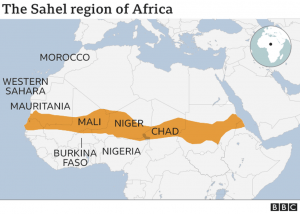LONDON, United Kingdom. Greece is seeking financial support from the European Stability Mechanism (ESM), the eurozone’s permanent bailout fund for struggling economies.
It was launched back in October 2012 as one of the key elements in the eurozone’s defences against a deepening debt crisis.
But what exactly is the ESM and how does it work?
What is the ESM?
The European Stability Mechanism is a European Union agency that provides financial assistance, in the form of loans, to eurozone countries or as new capital to banks in difficulty.
It is a permanent agency, based in Luxembourg, and has replaced the temporary European Financial Stability Facility (EFSF).
How much financial help can it provide?
The ESM has a maximum lending capacity of €500bn ($550bn; £360bn).
How does the ESM get the money?
It borrows in the financial markets, by selling bonds, the same method that governments use for most of their borrowing needs.
Is there a contribution from governments?
The financial foundation of the ESM is capital provided by the Eurozone governments. They have committed in principle to a total of €700bn, although they have actually paid in just €80bn. The additional capital can be called in if it is needed.
The capital is NOT the money used for providing assistance. It absorbs any losses if countries receiving help fail to repay it. It provides a reassurance to investors in the financial markets that they can lend to the ESM (by buying its bonds) and be confident of being repaid. That confidence is vital for keeping the ESM’s credit rating high and its borrowing costs low.
Which countries are the biggest contributors?
Germany provides 27% of the capital, France 20% and Italy 18%.
Anything from the UK?
No. The UK does, however, indirectly contribute to Eurozone bailouts where there is a contribution from the IMF. It also made a bilateral contribution in the case of the Republic of Ireland. The UK is, also indirectly, potentially affected by any losses incurred by yet another bailout agency – called the European Financial Stabilisation Mechanism (EFSM). It contributed to the bailouts of Ireland and Portugal.
What form does the financial assistance to Eurozone governments take?
The ESM can lend directly to governments. It can also buy their debts (bonds) either directly when they are first issued or in the financial markets.
In addition, the ESM can support banks directly. This support would be “recapitalisation”, usually by providing funds in return for a shareholding.
What support has the ESM provided?
The ESM’s first programme was a loan to Spain to help strengthen the country’s banks. The ESM paid a total of €41.3 billion in December 2012 and February the following year. The final repayment is due at the end of 2027.
The ESM’s only other programme so far was for Cyprus. The total available is just under €9 billion. So far €5.7 has been paid. The money is to support the government’s financial needs and for the recapitalisation of the financial sector.
Are there conditions attached to financial assistance?
Yes. The policies that the borrowing country is required to follow are negotiated on a case-by-case basis.
In the case of Spain the conditions were focused on the banks. With Cyprus the conditions were more wide ranging and covered tax, government spending, and healthcare and pension reform.
Credit: BBC




